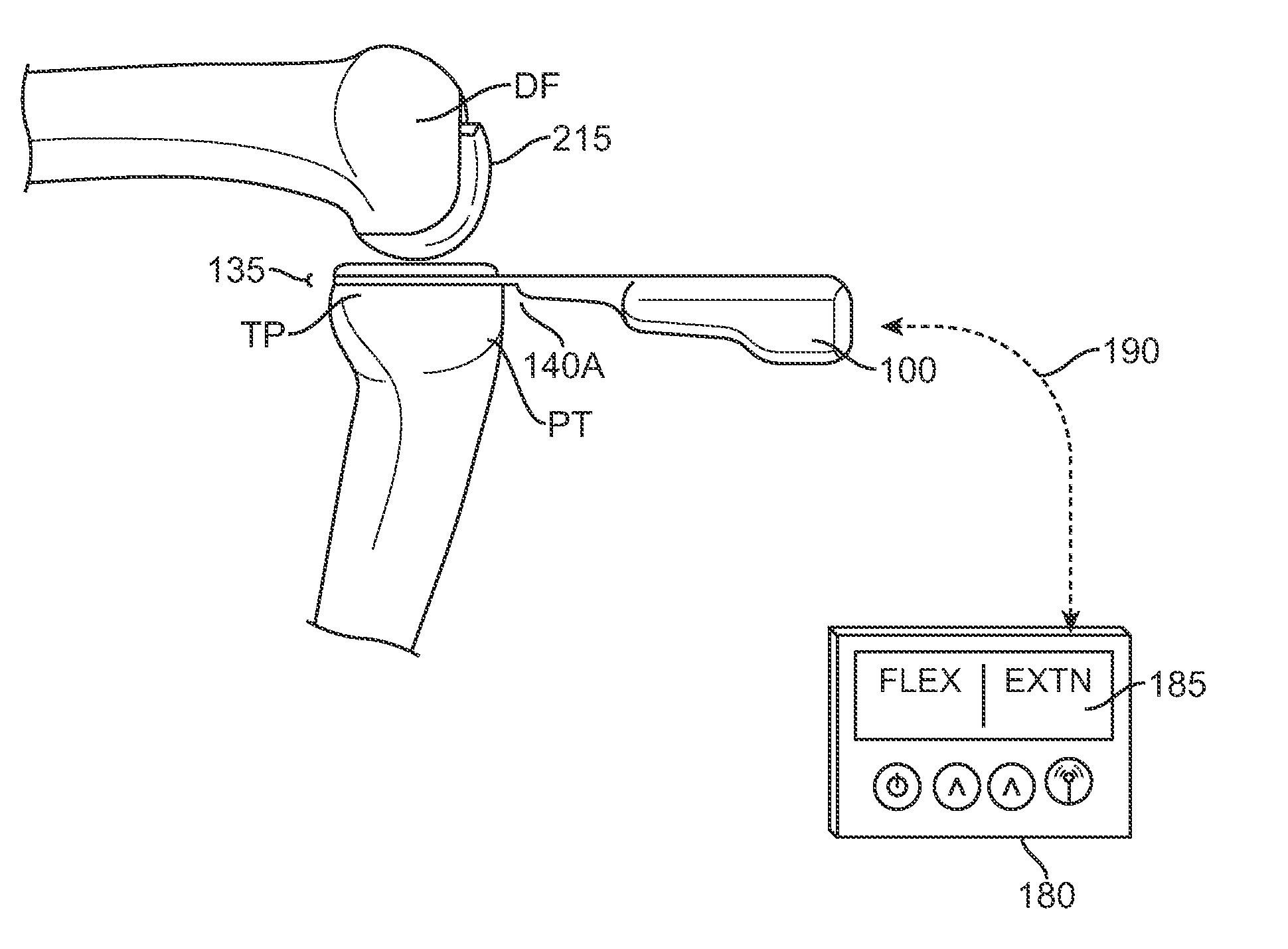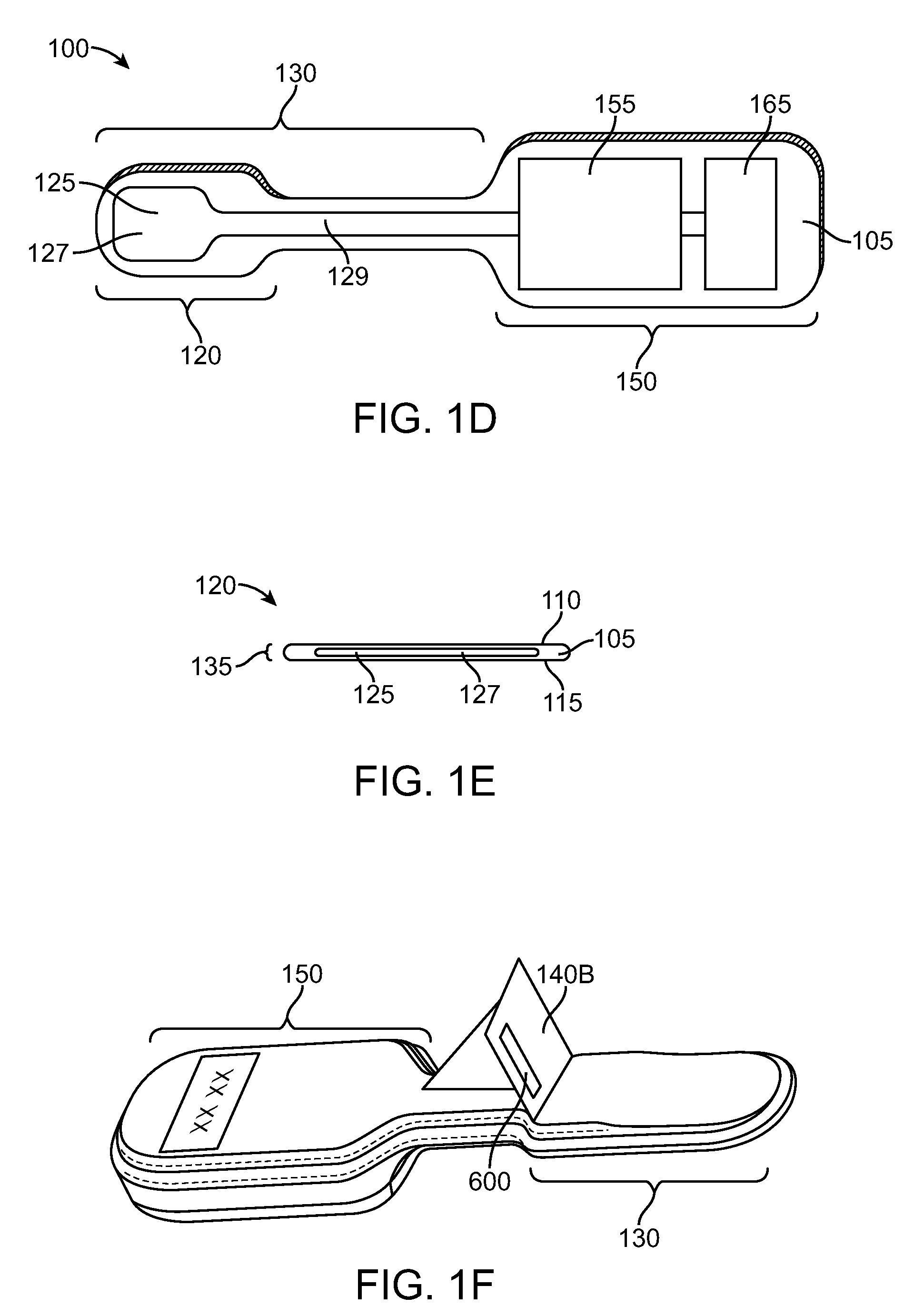Sensing force during partial and total knee replacement surgery
a knee replacement and sensor technology, applied in the field of medical surgical devices, systems and methods, can solve the problems of limited range of motion, poor patellar tracking, and significant pain of patients, and achieve the effects of standardized and repeatable, accurate and quantifiable measurement of force, and improved ligament tension balancing
- Summary
- Abstract
- Description
- Claims
- Application Information
AI Technical Summary
Benefits of technology
Problems solved by technology
Method used
Image
Examples
Embodiment Construction
[0048]The following exemplary embodiments of systems, devices and methods will be described in the context of sensing force during partial and total knee replacement surgery. This is intended to be for illustrative purposes only and one of ordinary skill in the art will recognize that the systems, devices and methods disclosed herein may be used in a number of other applications and therefore are not limited to knee surgery. The features and advantages will become apparent upon reading the following detailed description and referring to the accompanying drawings in which like numbers refer to like parts throughout.
[0049]FIGS. 1A-1F show a handheld force sensor 100 according to embodiments of the invention. FIG. 1A shows a perspective view of force sensor 100. FIG. 1B shows a side view of force sensor 100. FIG. 1C shows a top view of force sensor 100. FIG. 1D shows a cross section of force sensor 100 as viewed from the top down. FIG. 1E shows a cross section of a distal portion of fo...
PUM
 Login to View More
Login to View More Abstract
Description
Claims
Application Information
 Login to View More
Login to View More - R&D
- Intellectual Property
- Life Sciences
- Materials
- Tech Scout
- Unparalleled Data Quality
- Higher Quality Content
- 60% Fewer Hallucinations
Browse by: Latest US Patents, China's latest patents, Technical Efficacy Thesaurus, Application Domain, Technology Topic, Popular Technical Reports.
© 2025 PatSnap. All rights reserved.Legal|Privacy policy|Modern Slavery Act Transparency Statement|Sitemap|About US| Contact US: help@patsnap.com



